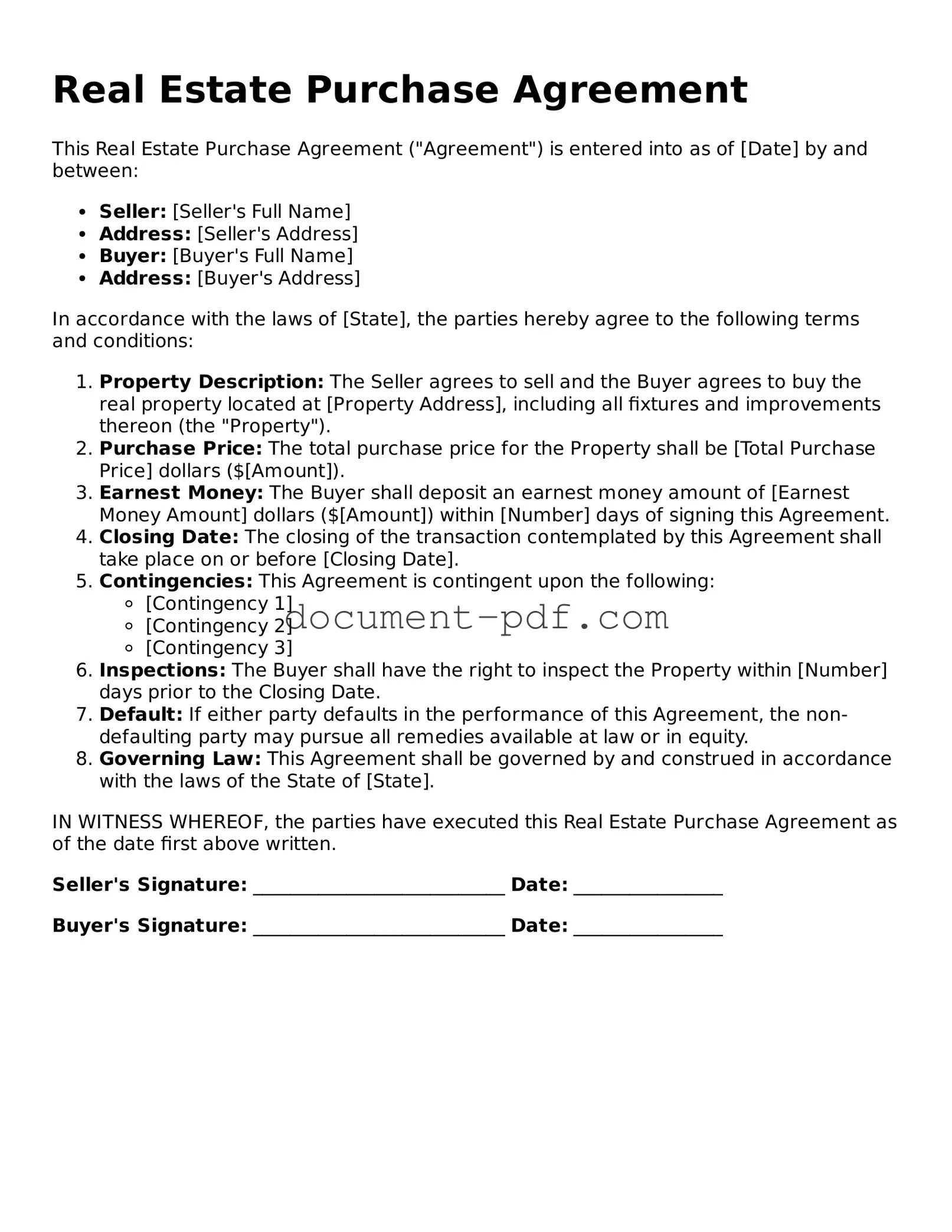Real Estate Purchase Agreement
This Real Estate Purchase Agreement ("Agreement") is entered into as of [Date] by and between:
- Seller: [Seller's Full Name]
- Address: [Seller's Address]
- Buyer: [Buyer's Full Name]
- Address: [Buyer's Address]
In accordance with the laws of [State], the parties hereby agree to the following terms and conditions:
- Property Description: The Seller agrees to sell and the Buyer agrees to buy the real property located at [Property Address], including all fixtures and improvements thereon (the "Property").
- Purchase Price: The total purchase price for the Property shall be [Total Purchase Price] dollars ($[Amount]).
- Earnest Money: The Buyer shall deposit an earnest money amount of [Earnest Money Amount] dollars ($[Amount]) within [Number] days of signing this Agreement.
- Closing Date: The closing of the transaction contemplated by this Agreement shall take place on or before [Closing Date].
- Contingencies: This Agreement is contingent upon the following:
- [Contingency 1]
- [Contingency 2]
- [Contingency 3]
- Inspections: The Buyer shall have the right to inspect the Property within [Number] days prior to the Closing Date.
- Default: If either party defaults in the performance of this Agreement, the non-defaulting party may pursue all remedies available at law or in equity.
- Governing Law: This Agreement shall be governed by and construed in accordance with the laws of the State of [State].
IN WITNESS WHEREOF, the parties have executed this Real Estate Purchase Agreement as of the date first above written.
Seller's Signature: ___________________________ Date: ________________
Buyer's Signature: ___________________________ Date: ________________
